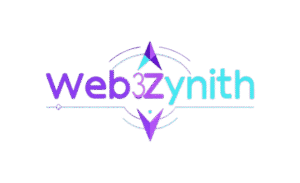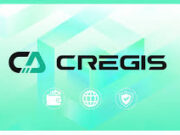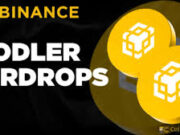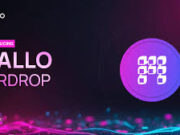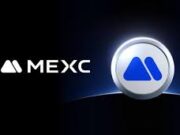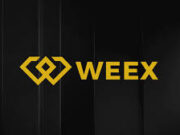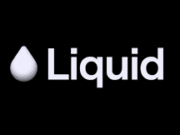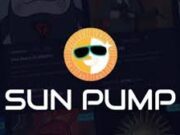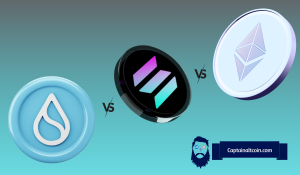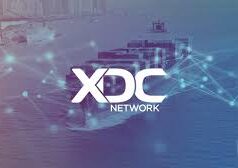The blockchain landscape is a battleground of innovation, with Layer-1 (L1) platforms like Ethereum, Solana, and Sui vying for dominance in the race to power the decentralized future. Each blockchain offers unique strengths, targeting scalability, speed, security, and developer accessibility to support decentralized applications (dApps), decentralized finance (DeFi), non-fungible tokens (NFTs), and Web3 ecosystems. Ethereum, the pioneer of smart contracts, remains the gold standard, while Solana has carved a niche with its high-speed transactions, and Sui, a newer contender, promises next-generation scalability. This blog post dives deep into the technical architectures, tokenomics, ecosystems, use cases, and future potential of Ethereum, Solana, and Sui, helping developers, investors, and enthusiasts understand which blockchain might best suit their needs in 2025.
Overview of Ethereum, Solana, and Sui
Ethereum
- Launched: 2015
- Founder: Vitalik Buterin
- Consensus Mechanism: Proof-of-Stake (PoS) since the 2022 Merge
- Market Cap: ~$360 billion (as of June 2025)
- Purpose: The first blockchain to introduce smart contracts, Ethereum is a programmable platform for dApps, DeFi, NFTs, and more. Its robust ecosystem and first-mover advantage make it the backbone of Web3.
Solana
- Launched: 2020
- Founder: Anatoly Yakovenko
- Consensus Mechanism: Proof-of-History (PoH) + Proof-of-Stake (PoS)
- Market Cap: ~$118.86 billion (as of June 2025)
- Purpose: Designed for high throughput and low-cost transactions, Solana targets scalability for dApps, DeFi, NFTs, and gaming, positioning itself as a faster alternative to Ethereum.
Sui
- Launched: 2023
- Founder: Mysten Labs (ex-Meta Diem team)
- Consensus Mechanism: Delegated Proof-of-Stake (DPoS) with Narwhal-Tusk (DAG-based)
- Market Cap: ~$9.65 billion (as of June 2025)
- Purpose: A next-generation L1 blockchain, Sui focuses on unparalleled scalability, low latency, and secure asset ownership, particularly for gaming, NFTs, and DeFi.
Technical Architecture
Consensus Mechanisms
- Ethereum: Since transitioning to PoS in 2022, Ethereum relies on validators staking ETH to secure the network. Transactions are processed sequentially, with a current throughput of 12–15 transactions per second (TPS) on the base chain, though Layer-2 (L2) solutions like Arbitrum and Optimism boost scalability. Finality takes up to 16 minutes, and gas fees can spike during congestion.
- Solana: Solana’s unique Proof-of-History (PoH) timestamps transactions, enabling parallel processing alongside PoS. This allows a theoretical maximum of 65,000 TPS (up to 200,000 TPS with the upcoming Firedancer validator client) and block times of ~400 milliseconds. However, real-world TPS averages ~2,400–3,000 due to network constraints.
- Sui: Sui uses a Delegated Proof-of-Stake (DPoS) model with a Directed Acyclic Graph (DAG)-based Narwhal-Tusk consensus, enabling parallel transaction execution. It boasts a theoretical maximum of 297,000 TPS, with real-world peaks at 854 TPS in July 2023. Sub-second finality (390 milliseconds) makes it ideal for high-frequency use cases.
Comparison: Sui leads in theoretical TPS and finality, followed by Solana. Ethereum lags in base-layer speed but compensates with L2 solutions. Solana and Sui prioritize scalability over decentralization, with fewer validators (Solana: ~1,400; Sui: ~106) compared to Ethereum’s ~1 million.
Programming Languages
- Ethereum: Uses Solidity, a flexible but vulnerability-prone language for smart contracts. Its Ethereum Virtual Machine (EVM) is widely adopted, but sequential processing limits scalability.
- Solana: Employs Rust and C, known for high performance and flexibility. Rust’s familiarity allows developers to build complex dApps, but the account-based model requires manual account declarations for parallelism, which can be labor-intensive.
- Sui: Built with Move, a Rust-based language from Meta’s Diem project, designed for secure and efficient smart contract development. Move’s object-centric model simplifies asset management and enhances security against attacks like reentrancy.
Comparison: Sui’s Move language offers superior security and developer efficiency for asset-focused dApps, while Solana’s Rust is more versatile but less specialized. Ethereum’s Solidity is the most widely used but prone to errors, making it less ideal for next-gen applications.
Data Models
- Ethereum: Uses an account-based model, where transactions update account balances sequentially, contributing to high gas fees during peak demand.
- Solana: Also account-based, but PoH enables parallel processing, reducing bottlenecks. However, developers must specify all accounts involved, increasing complexity.
- Sui: Features an object-centric model, where assets are treated as distinct objects, allowing independent transactions to bypass consensus. This enables granular parallelism and scalability for micro-transactions.
Comparison: Sui’s object-centric approach is a game-changer for scalability, especially in gaming and NFTs. Solana’s parallelism is robust but less flexible, while Ethereum’s sequential model struggles with high transaction volumes.
Scalability and Performance
- Ethereum: Base-layer scalability is limited (12–15 TPS), but L2 rollups (e.g., Arbitrum, Optimism) handle millions of transactions daily at lower costs. Future upgrades like sharding aim to boost mainnet capacity.
- Solana: Achieves high throughput via PoH and PoS, but congestion during events like the 2024 memecoin frenzy caused 75% transaction failure rates. The Firedancer client and sharding will further enhance scalability.
- Sui: Horizontal scalability and parallel processing allow Sui to handle peak loads without fee spikes. Its storage-based fee model stabilizes costs, making it more predictable than Solana’s congestion-sensitive fees.
Comparison: Sui’s architecture is theoretically the most scalable, followed by Solana. Ethereum relies on L2s to compete, which adds complexity but leverages its massive ecosystem.
Tokenomics
Ethereum (ETH)
- Total Supply: No hard cap, mildly inflationary post-Merge due to reduced issuance and fee burning.
- Circulating Supply: ~120 million ETH.
- Use Cases: Gas fees, staking, governance, and DeFi collateral.
- Market Dynamics: ETH’s $360 billion market cap reflects its dominance. Its price (~$2,433 in June 2025) is driven by institutional adoption, including U.S. spot ETH ETFs.
Solana (SOL)
- Total Supply: ~588.90 million SOL, with 474.74 million circulating.
- Use Cases: Staking, transaction fees, governance.
- Market Dynamics: SOL’s $118.86 billion market cap and $207.77 price (January 2025) reflect strong growth (605% in the past year). However, its uncapped supply raises inflation concerns.
Sui (SUI)
- Total Supply: 10 billion SUI, with ~2.85 billion circulating (27%).
- Use Cases: Gas fees, staking, governance, and collateral.
- Market Dynamics: SUI’s $9.65 billion market cap is smaller but growing rapidly (115% vs. SOL since August 2024). Low circulating supply poses risks of future selling pressure from token unlocks.
Comparison: Ethereum’s mature tokenomics offer stability, while Solana’s uncapped supply and Sui’s low circulating supply introduce risks. Sui’s rapid price growth reflects speculative hype, but Solana’s established market cap provides more liquidity.
Ecosystem and Adoption
Ethereum
- Ecosystem: The largest and most diverse, hosting ~60% of DeFi total value locked (TVL) and leading NFT marketplaces like OpenSea. It supports thousands of dApps across DeFi, gaming, and Web3. L2s like Arbitrum and Optimism absorb millions of daily transactions.
- Developer Activity: Electric Capital reports Ethereum has the most active developers (~3,500 monthly), driven by its mature tooling and EVM compatibility.
- Use Cases: DeFi (Uniswap, Aave), NFTs, DAOs, and enterprise solutions.
- Challenges: High gas fees and slower speeds on the base layer push users to L2s, adding complexity.
Solana
- Ecosystem: Thriving in DeFi (Serum, Jupiter), NFTs (Magic Eden), and gaming (Star Atlas, Aurory). It ranks among the top blockchains for NFT trading volume and memecoin markets (e.g., BONK).
- Developer Activity: ~1,500 monthly active developers, second only to Ethereum. Partnerships with Visa and Shopify boost institutional adoption.
- Use Cases: DeFi, NFTs, Web3 gaming, and payments.
- Challenges: Network outages (e.g., 2024 memecoin frenzy) and centralization concerns (~1,400 validators) hurt reliability.
Sui
- Ecosystem: Emerging but growing, with focus on gaming (SuiPlay0X1 console), DeFi, and NFTs. USDC integration via Circle’s Cross-Chain Transfer Protocol enhances liquidity. TVL is ~$1 billion, far below Solana and Ethereum.
- Developer Activity: ~1,400 monthly active developers, a 219% increase in 2024, but still lags Solana and Ethereum. Move’s familiarity with Rust attracts Solana developers.
- Use Cases: Gaming, NFTs, DeFi, and micro-transactions.
- Challenges: Limited ecosystem maturity and fewer validators (~106) raise decentralization concerns.
Comparison: Ethereum’s ecosystem is unmatched in size and diversity, but Solana’s vibrant DeFi and NFT markets make it a strong contender. Sui’s ecosystem is nascent, with potential in gaming and DeFi but limited adoption so far.
Use Cases and Strengths
Ethereum
- Strengths: First-mover advantage, robust security, and massive ecosystem. Ideal for complex DeFi protocols, enterprise solutions, and institutional adoption (e.g., ETH ETFs).
- Use Cases: DeFi (MakerDAO, Curve), NFTs (Bored Ape Yacht Club), DAOs, and L2-powered applications.
- Example: Ethereum’s L2s handle high-volume dApps like Uniswap, reducing costs while leveraging mainnet security.
Solana
- Strengths: High speed and low fees (~$0.00025 per transaction) make it ideal for retail and institutional use cases like payments and gaming.
- Use Cases: DeFi (Jupiter), NFTs (Okay Bears), Web3 gaming, and tokenized assets.
- Example: Solana’s Saga mobile device and NFT airdrops drove user engagement, a model Sui is emulating with SuiPlay0X1.
Sui
- Strengths: Unmatched scalability, sub-second finality, and secure asset ownership via Move. Excels in micro-transactions and gaming.
- Use Cases: Gaming (SuiPlay0X1, XOCIETY), DeFi, and NFT platforms.
- Example: Sui’s object-centric model enables seamless asset transfers in gaming, offering true ownership without consensus delays.
Comparison: Ethereum dominates broad use cases, Solana excels in high-throughput applications, and Sui shines in specialized, scalable scenarios like gaming and micro-transactions.
Risks and Challenges
Ethereum
- Risks: High gas fees during congestion and L2 complexity deter retail users. Competition from faster L1s like Solana and Sui threatens market share.
- Mitigation: L2 rollups and future sharding upgrades aim to address scalability and cost issues.
Solana
- Risks: Network outages (e.g., 75% transaction failures in 2024) and centralization concerns (~1,400 validators) question reliability. Uncapped token supply risks inflation.
- Mitigation: Firedancer and validator software upgrades (Agave 2.2) aim to improve uptime and scalability.
Sui
- Risks: Limited ecosystem maturity, low validator count (~106), and high token unlock risk (73% of supply locked) pose challenges. Regulatory uncertainty for hybrid models is a concern.
- Mitigation: Growing developer activity and partnerships (e.g., USDC integration) signal adoption potential.
Comparison: Ethereum’s risks are tied to cost and complexity, Solana’s to reliability, and Sui’s to maturity and decentralization. Each faces trade-offs in the blockchain trilemma (scalability, security, decentralization).
Market Performance and Investment Perspective
Ethereum
- Price: ~$2,433 (June 2025), up 50% in the past year but outperformed by SOL.
- Investment Case: Stable, blue-chip asset with institutional backing (ETFs) and a massive ecosystem. Lower risk but modest short-term gains compared to newer L1s.
- Outlook: L2 adoption and sharding could drive growth, but competition from faster chains may cap upside.
Solana
- Price: ~$207.77 (January 2025), up 605% in the past year.
- Investment Case: Established with strong DeFi/NFT traction and institutional support (e.g., Canadian SOL ETFs). Moderate risk with high reward potential (CoinGecko predicts $200–$600).
- Outlook: Firedancer and regulatory clarity could push SOL to $410, per Raoul Pal’s Fibonacci analysis.
Sui
- Price: ~$3–$5 range (January 2025), up 115% vs. SOL since August 2024.
- Investment Case: High-risk, high-reward due to speculative growth and low circulating supply. Ideal for investors betting on gaming and DeFi adoption.
- Outlook: Sui’s 219% developer growth and USDC integration signal upside, but token unlocks could trigger sell-offs.
Comparison: Ethereum is the safest bet, Solana offers balanced risk-reward, and Sui is a speculative play with significant growth potential but higher risks.
Future Potential
Ethereum
- Strengths: Unrivaled ecosystem, institutional adoption, and L2 scalability.
- Future: Sharding and L2 improvements could solidify Ethereum’s dominance, but it must reduce complexity to retain retail users.
- Prediction: Likely to remain the DeFi and enterprise leader, with steady but not explosive growth.
Solana
- Strengths: Proven scalability, vibrant ecosystem, and institutional backing.
- Future: Firedancer, confidential transfers, and DeFi/NFT growth could make Solana the go-to for high-throughput dApps. Reliability improvements are critical.
- Prediction: Could challenge Ethereum’s market share if outages are resolved, with a potential 4x price increase.
Sui
- Strengths: Cutting-edge scalability, Move language, and gaming focus.
- Future: SuiPlay0X1 and DeFi partnerships could drive adoption, but ecosystem maturity and decentralization are hurdles.
- Prediction: A breakout dApp in gaming or DeFi could propel Sui into the top 10, but it’s a high-risk bet.
Comparison: Ethereum’s stability contrasts with Solana’s proven growth and Sui’s speculative potential. The “killer app” (e.g., a revolutionary dApp) could determine the winner in the L1 wars.
Which Blockchain Should You Choose?
- For Developers:
- Ethereum: Best for building on a mature, secure platform with extensive tooling and EVM compatibility. Ideal for complex DeFi or enterprise dApps.
- Solana: Suited for high-throughput dApps in DeFi, NFTs, or gaming, with Rust’s flexibility and a robust community.
- Sui: Ideal for gaming or micro-transaction dApps, with Move’s security and parallel processing. Best for innovative, asset-focused projects.
- For Investors:
- Ethereum: Low-risk, long-term hold with institutional backing.
- Solana: Moderate-risk, high-reward for those betting on DeFi and NFT growth.
- Sui: High-risk, high-reward for speculative investors targeting emerging tech.
- For Users:
- Ethereum: Reliable for DeFi and NFTs but costly without L2s.
- Solana: Fast and cheap for retail users, ideal for trading and gaming.
- Sui: Emerging with seamless UX for gaming and micro-transactions, but adoption is limited.
Conclusion
Ethereum, Solana, and Sui represent distinct approaches to solving the blockchain trilemma. Ethereum’s unmatched ecosystem and security make it the safest choice, but its scalability lags without L2s. Solana’s high throughput and vibrant ecosystem position it as a strong contender, though reliability issues persist. Sui’s innovative architecture and gaming focus offer immense potential, but its young ecosystem and centralization risks require caution.
In 2025, Ethereum will likely retain its throne for institutional and DeFi dominance, Solana will drive retail and gaming adoption, and Sui could emerge as a dark horse if it capitalizes on its technical edge. The choice depends on your priorities: stability (Ethereum), proven scalability (Solana), or speculative innovation (Sui). As the L1 wars heat up, the blockchain that delivers a breakout dApp or mainstream adoption could redefine the landscape. For now, all three are shaping the future of Web3 in their own way.
Sources:
- Coinbureau.com, Mudrex.com, Coindcx.com, Cryptomus.com, Archway.finance, Cryptonews.com, Stormrake.com, Reddit (r/solana, r/sui), Messari.io, Antiersolutions.com, Onesafe.io, Blockearner.com.au, Cointelegraph.com, Atomicwallet.io, Trustwallet.com, Altcoinbuzz.io, Chainspect.app, Cointribune.com, Theoregongroup.com, Medium.com, Web3.bitget.com
- Posts on X by @BL0CKRUNNER, @angelodotsui, @juzybits, @coingecko, @Aida_Sui, @ansujeet, @ayoadhe
Disclaimer: This blog post is for informational purposes only and not financial or technical advice. Blockchain investments and development involve significant risks. Always conduct your own research before investing or building on any platform.
